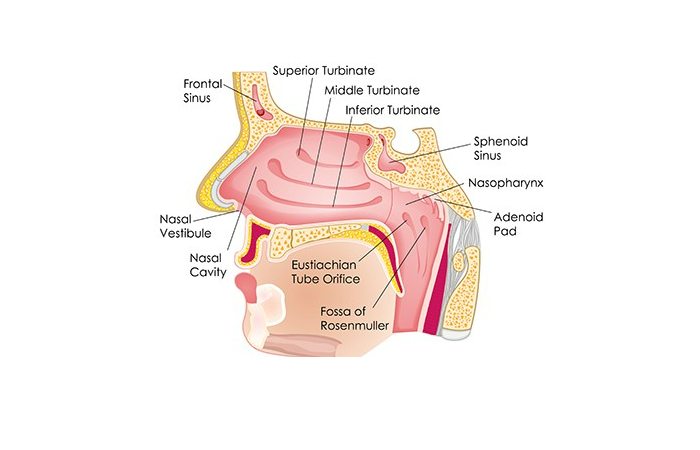Table of Contents
Introduction
Craniofacial release editing, often referred to as CFR, is an advanced intracranial procedure. It has proven effective in treating many skeletal and neurological disorders. This technique is designed to improve movement in the cranial system, thus increasing cranial respiratory function.
During the procedure, small balloons are inserted into the nose, often into the nasopharynx. Then it is quickly inflated to increase the movement of the craniofacial bones.
Craniofacial Release
If you really want to understand how CFR works, you need to learn more about craniofacial anatomy. But, first, you have to keep one thing clear. Contrary to popular belief, craniofacial bone is not a single solid bone. Instead, it is made up of 22 individual fused bones that move with every breath you take.
Each bone follows its direction, but the movement is generally of the flexion/extension type. This movement is essential not only for maintaining normal bodily functions but also for your overall health.
We don’t need to stress how vital brain function is to your well-being. Its value is well known. After all, all body functions depend on the nervous system’s functioning. For example, if there is a problem with the movement of the craniofacial, there is abnormal pressure on the brain and spinal cord, which can be very harmful. The effect is felt in every function of the body.
Diseases begin as functional disorders.
Usually, diseases begin as functional disorders. If this disease is not treated in time, the problem takes a massive form and leads to chronic disease. These disorders are usually either endocrine, neurological or a combination of the two. The thing is that the endocrine and nervous systems control the entire body. So any problems with these systems have cascading effects.
The basic component of these two systems is the sphenoid bone. The main gland of the body, the pituitary gland, is located at the top of the sphenoid bone. It is, therefore, natural that the respiratory movement of the sphenoid bone is essential for the normal functioning of the pituitary gland. Therefore, any imbalance at this level can significantly impact the whole body, causing many diseases.
Unfortunately, deviations of the cranial system are more common than you might realize. You’d be amazed at how calm it is to circumvent the systems. Cervical trauma can be caused by excessive force during childbirth, blows to the head or face, drug use, and neck injuries.
Fortunately, the CFR can deal with most of the effects of cranial dysfunction and provide the relief you need. CFR testing procedures can detect cranial aberrations fairly quickly. You can also determine if something is wrong with a few simple tests that you can do at home. Look closely in the mirror for any facial asymmetry. Try to detect the deviation and asymmetry of the nose. These are signs of problems with the craniofacial. If caught early, the problem can be treated before it becomes more widespread.
About Cranial Facial Editing And How It Works?

Many people throughout Temecula, California, visit our clinic for regular chiropractic adjustments that relieve pain and joint stiffness. However, in some cases, Dr Nathan Horst goes beyond traditional modifications, offering advanced treatments such as cranial facial editing (CFR). Here is some general information about CFR and what it can achieve.
The craniofacial is not a single bone but 22 separate bones that move every time you breathe. Cranial facial editing is a method of cranial modification that treats a full range of neurological conditions and skeletal disorders.
Cranial facial editing was introduced in the 1930s by Dr J. Developed by Stober. This procedure involves the use of a small air balloon placed in the nasal passage and carefully inflated. By inflating this balloon, adjustments can be made to various parts of the craniofacial, especially the sphenoid part. In addition to many other benefits, adjustments help improve the flow of cerebrospinal fluid to the spine and brain.
What Differentiates Craniofacial Release from Other Endonasal Techniques?
CFR is based on the SOT (Sacro Occipital Technique) protocol, which entails the removal of everything below the level of the atlas before craniofacial adjustment. By ‘scanning all under atlas’, we refer to the methods by which we detect spinal cord demyelination before torque penetration from the cranial vault and dura using SOT procedures and traditional chiropractic techniques.
Torque mitigation is the primary goal of CFR technology, as it plays a complex role in cranial function and, more importantly, brain function. But relieving the torque of the dura has a more significant effect on physical function than improving brain function. By reducing the tension of the dura on its anterior attachment (on the diaphragmatic sac, which surrounds and surrounds the base of the pituitary gland), it reduces mechanical torque on the pituitary gland and helps facilitate normal endocrine function.
This concept was introduced in the late 1930s by D. Backed by Eddie’s research in Russia. Speransky, MD, is director of research at the All-Union Institute for Experimental Medicine and author of A Basis for the Theory of Medicine. Through his research, Dr. Speransky determined that “the slightest mechanical stress on the control centres of the brain, especially the pituitary-hypothalamus complex, causes destructive distortions throughout the body.” This was a 10-year learning, during which Dr Speransky could find over 80 specific disorders that he could directly attribute to the “mechanical torque” phenomenon.
Craniofacial Release (CFR) Procedure
A balloon is carefully inserted into the nasal passage during cranial facial release. The patient takes a breath and holds it. At this point, the balloon is briefly inflated to achieve adjustment. The procedure is generally not painful, similar to dipping into a pool and having water run down your nose. It is recommended that patients perform a total of four treatments over seven to ten days for proper adjustment.
Possible side effects of craniofacial discharge include nosebleeds, nasal soreness or pain, and throat irritation. In rare cases, cranial facial release may cause a mild headache in patients. These side effects are usually mild and only last a few days.
Results And Effectiveness Of Cranial Facial Release (CFR)
Many patients who have undergone cranial facial editing report good treatment results. This usually means an improvement in the condition they were experiencing, as well as a general sense of well-being. The cranial facial release is often part of various healing modalities and may be essential to achieving wellness.
Is craniofacial release (CFR) right for me?
The surest way to find out if cranial facial editing is right for you is to visit the clinic for a consultation. We can discuss all possible treatments with you in more detail, and help create an optimal treatment plan for your condition and symptoms.
Talk to a skilled chiropractor
To learn more about the craniofacial release and whether it’s right for you, be sure to contact a chiropractor today. We look forward to your visit and discussing your health and wellness concerns in more detail.
Side Effects of the Craniofacial Release
Naturally, you may want to know if this technique could be harming you in any way. After all, this is cranial work we’re talking about, and it can’t risk.
Fortunately, craniofacial editing is a completely safe technique. It is a non-invasive procedure with minimal risk. Just ensure you only trust a license professional to get it done, and you don’t have to worry.
Be sure to tell your chiropractor if you have a bleeding disorder or are taking long-term medications. He can then advise you whether this treatment is suitable for you accordingly. All drugs have side effects, some more noticeable than others. Therefore, relying on drugs can be harmful in the long run. However, with CFR, you do not need to worry about any adverse reaction in your body.
Benefits of Cranial Facial Editing
So why should you consider CFR treatment, and how can it benefit you? For one thing, it’s safe and fast. You will not have to wait long for the results to appear. You will not feel the difference in more than ten days.
In addition, since it is a non-surgical method, you do not have to worry about complications, unlike surgical procedures. Also, this method of treatment reduces drug addiction. Moreover, it is also cost-effective. You will not have to spend much on tests, medications and other procedures.
Craniofacial Release can be very useful in a wide variety of situations. it includes
Respiratory disorders
- Sinusitis
- snoring
- Sleep Apnea
- Deviation of the nasal septum
- Migraine
- Dizziness,
- Facial pain (trigeminal neuralgia)
- Facial paralysis (half facial paralysis).
- tmj disorder
- Post-concussion syndrome
- seizures
- Other neurological disorders
The treatment has also proven highly effective in infants with cranial abnormalities.
Conclusion
The process takes about 3 seconds and is done in a series of 4-day treatments over 7-10 days. The procedure isn’t painful but uncomfortable – it’s the same feeling as jumping into a pool and sucking water out your nose.
Those who have tried CFR treatment are often patients who have gone through a series of conventional medical procedures without success and are now looking for an alternative, conservative approach that is effective and cost-effective!
Related posts
Featured Posts
Demerara Syrup – Introduction, Demerara Sugar Vs Brown Sugar, Syrup
What Is Demerara Syrup? Demerara Syrup is a processed sugar that is minimally processed, gives a golden brown colour, and…
Tarte Foundation – Best Tart Foundation 2022
Tarte Foundation Tarte Foundation – It has become a popular and game-changing brand in an industry that started small but…


